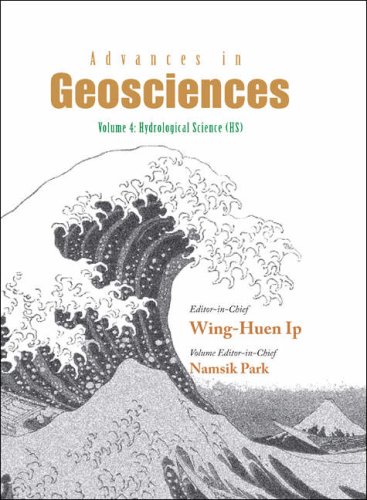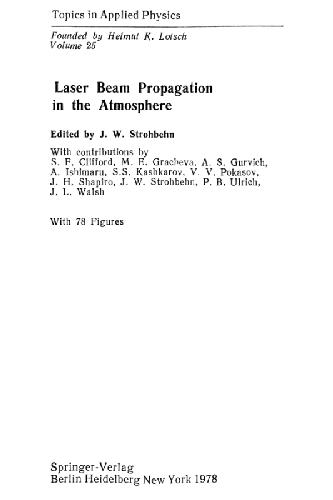Wing-huen Ip9789812564566, 981-256-456-X
Table of contents :
CONTENTS……Page 14
Editors……Page 6
Referees’ Information……Page 8
1. Introduction……Page 18
2. Tsunami Generation by Earthquakes……Page 21
3. Computer Simulation of Tsunami Propagation……Page 22
4. Studies of Past Earthquakes and Tsunamis……Page 23
5. Tsunami Warning and Hazard Reduction Systems……Page 24
References……Page 27
1. Introduction……Page 28
2. Observation……Page 29
3. Modeling of Tsunami and Comparison with Observations……Page 30
4. Reduction of Sea Level Variation Effects for Seismic Normal Mode Observation……Page 31
References……Page 32
1. Introduction……Page 34
2. Characterization of Pre-shock Cumulative Moment Release from the AMR Analysis……Page 35
3. Data Used for the Analysis……Page 36
4. Characterization of the Cumulative Benioff Strain Curve……Page 38
5. Discussion and Conclusions……Page 41
References……Page 42
1. Introduction……Page 44
2. Data and Pre-processing……Page 47
3. Focal Mechanism and Azimuth-dependent STFs……Page 48
4. Spatio-temporal Rupture Process……Page 49
5. Averaged STF……Page 53
6. Discussion and Conclusions……Page 54
References……Page 56
1. Introduction……Page 58
2.1. Average displacement (D) and maximum displacement (Dmax)……Page 59
2.3. Spectra and predominant frequency (f0) of near-fault accelerograms……Page 60
2.4. Source scaling law, corner frequency (fc), and spectral level (0)……Page 61
2.7. Rupture velocity (VR)……Page 62
2.9. Rupture models……Page 64
3. Summary……Page 65
References……Page 66
1. Introduction……Page 68
2. Data and Processing……Page 69
3. Rupture Processes……Page 71
Acknowledgments……Page 75
References……Page 76
1. Introduction……Page 78
2. How to Mitigate Seismic Hazards……Page 81
2.2. Strong motion prediction……Page 82
3. The Taipei Metropolitan Area……Page 83
5. Core Subjects of this Program Project……Page 87
6. International Cooperation……Page 88
References……Page 89
Extreme Earthquake Disasters — Verification of the Method of Parameterization of the Character of Distribution of the Rare Major Events M. V. Rodkin and V. F. Pisarenko……Page 92
1. Introduction……Page 93
2. The Non-Linear and Linear Regimes of Grows of Cumulative E.ects……Page 94
3. Parameterization of the Distribution Law of the Rare Strongest Events Exceeding Characteristic Mc Value……Page 101
4. Comparison of the Results of the Use of the Method with the Occurrence of the Strongest Earthquake Disasters……Page 103
5. Conclusions……Page 104
Acknowledgments……Page 105
References……Page 106
1. Introduction……Page 108
3. Causes of Failure in Post-Earthquake Resettlement……Page 110
4. Holistic Planning after an Earthquake……Page 111
5. Building Materials and Sustainability……Page 112
6. Beyond Codes to Community Design……Page 113
7. Criteria for Success in Post-Earthquake Resettlement……Page 114
8. Mitigation in Post-Earthquake Housing Using Appropriate Repair, Restoration, and Strengthening Concepts……Page 115
10. Restoration……Page 116
11. Strengthening of Existing Buildings……Page 117
12. Conclusion……Page 118
References……Page 120
1. Introduction……Page 122
2. Experiment……Page 123
3.1. Force and displacement……Page 125
3.2. Change in waveform and stiffness of the fault……Page 126
4.1. Model description……Page 128
4.3. Shear loading and measurements……Page 129
4.5. Force chain analysis……Page 130
5. Discussion……Page 132
References……Page 133
1. Introduction……Page 134
2. Fuzzy-Rule-based System……Page 135
3.1. Fuzzification of inputs……Page 136
4. Application……Page 137
4.1. Fuzzy model for reservoirs and calibration of model……Page 138
5. Conclusions……Page 140
References……Page 143
1. Introduction……Page 144
2. Seismotectonic Activity and Earthquake Data Selection……Page 145
3.1. Return maps……Page 146
3.2. Non-linear forecasting analysis……Page 147
3.3. Predictive correlation analysis……Page 149
3.4. Second order Kolmogorov entropy (K2)……Page 150
4. Results and Discussion……Page 151
References……Page 152
1. Introduction……Page 154
2. Phenomenon Explanation……Page 155
3. Gravity Variation……Page 156
Acknowledgment……Page 157
References……Page 158
1. Introduction……Page 160
2. The Fictitious Compress Recovery Approach……Page 161
3. The “Downward Continuation”……Page 163
4. Simulation Results……Page 164
Acknowledgment……Page 167
References……Page 168
1. Introduction……Page 170
2. Geologic Setting……Page 171
3. Jurassic Accretionary Complex in Mino Area……Page 172
4. Ocean Plate Stratigraphy……Page 174
5. Melange Features……Page 176
6. Progressive Melange Formation……Page 178
7. Conclusion……Page 180
References……Page 181
1. Introduction……Page 184
2. Geological Setting……Page 186
3. Structure of the Upper Crust Below Cuddapah Basin……Page 189
4. Discussion and Concluding Remarks……Page 191
References……Page 194
1. Introduction……Page 196
2. The Theory……Page 197
3. Research Methodology……Page 198
4. Discussion……Page 199
References……Page 203
1. Introduction……Page 206
3. Discussion……Page 207
References……Page 211
1. Introduction……Page 214
2. Determination of Velocity Field Background of Active Blocks in North China……Page 216
3. Relative Motion Analysis of Block Boundaries……Page 218
4. Interior Deformation Analysis of Active Blocks……Page 220
Acknowledgments……Page 221
References……Page 222
1. Introduction……Page 224
2. Magnetotelluric Observations……Page 225
3. Two-Dimensional Magnetotelluric Modeling……Page 226
4. Discussion and Conclusion……Page 227
References……Page 230
Large-Scale Silicic Volcanism — The Result of Thermal Maturation of the Crust S. de Silva, G. Zandt, R. Trumbull and J. Viramonte……Page 232
1. Introduction……Page 233
2. The Altiplano-Puna Volcanic Complex……Page 234
3. Temporal Development of Ignimbrite Volcanism in the APVC……Page 237
4. Discussion……Page 239
5. Concluding Remarks……Page 242
References……Page 243
1. Introduction……Page 248
2. Geophysical Signatures……Page 250
4. The Model……Page 251
5. Discussion and Conclusions……Page 254
References……Page 255
1. Introduction……Page 258
2.1. Geology……Page 260
2.2. Observation data……Page 261
3.2. Relation of fault deformation behavior with groundwater level (pore pressure of fault zone)……Page 264
3.3. Relation of fault deformation behavior with precipitation……Page 266
4.1. Mechanism for effect of precipitation and groundwater on fault deformation behavior……Page 267
4.2. Understanding the Babaoshan fault deformation behavior……Page 269
4.3. Influence of water absorption diversity of rocks on fault deformation behavior……Page 270
References……Page 271







Reviews
There are no reviews yet.